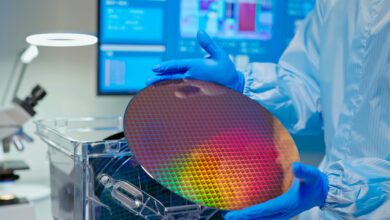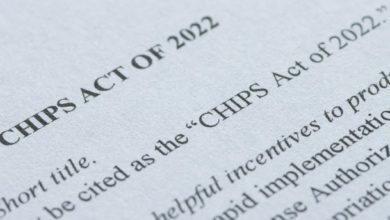
The CHIPS Act passed the House of Representatives on 28 July, one day after passing the Senate, and President Biden signed it into law on 9 August.
Formally the CHIPS and Science Act, the legislation represents the most significant research bill passed by Congress in many years. At its heart is the CHIPS Act itself — a $56 billion investment in American semiconductor production. This includes $52.7 billion in direct subsidies and tax breaks for companies to move chip production back into the United States. The additional money is for workforce development, research, and $1.5 billion for 5G wireless technology deployment.
Chip manufacturing companies had already announced a number of major investments in manufacturing facilities in the United States, including a $20 billion Intel facility in Ohio. CHIPS Act investments should accelerate this trend, strengthening American manufacturing, creating thousands of jobs, and improving supply chains across the economy.
Before a federal agency can spend money, it needs two things from Congress: permission to spend the money (authorization) and the actual dollars to be made available (appropriation). This is similar to how teenagers need both permission to go to the movies and money to buy a ticket. They need to ask their parents for both, but the latter is harder to get.
The same is not true of the rest of the bill.
Beyond CHIPS, the bill creates, defines, and expands new programs to make America more innovative. These include significant new investments in the National Science Foundation (NSF) research, a clear mission and budget for the new Technology, Innovation, and Partnerships (TIPs) Directorate within the NSF, research security rules, and funding for new research infrastructure.
Congress also inserted provisions to strengthen innovation across the entire country, especially places that have not traditionally participated in innovation economy. These workforce development programs are aimed at all workers, including those seeking technical certifications, attending community college, and undergraduate students — all groups that have been overlooked in other workforce bills. Moreover, many programs focus on regions of the country and populations that have similarly been overlooked.
Foremost among these are the Regional Technology and Innovation Hubs which will support innovation strategies in “geographically diverse” parts of the country. These should be predominantly located in rural America and other places that are not currently home to many high-tech companies. Congress’s explicit intent is to spread investments in research and innovation more broadly across the country to help pull more diverse populations into our 21st century economy.
Other research provisions include investments in the Department of Energy’s Office of Science, quantum computing, the National Institute of Standards and technology (NIST), and technology transfer programs. The bill also includes a section clarifying NASA’s missions and explicitly endorsing its Artemis and moon to Mars programs, although the NASA section does not include any funding levels.
The problem with the non-CHIPs parts of the bill is that, while they authorize programs, they don’t appropriate any actual funding. Without appropriations, the programs and investments described in the bill can’t happen.
Congress will now shift its focus to the FY 2023 appropriations bills. The 2023 fiscal year starts on 1 October, but there is little chance that the appropriations bills will be done by then. Rather, Congress is more likely to pass a large “Omnibus” appropriations bill after the November election.
IEEE-USA is working with legislators to ensure that funding for all of the technology promoting sections of the CHIPS Act is included in that bill. IEEE members are encouraged to contact their legislators this month to express support for fully funding the CHIPs Act this year.
IEEE-USA staffer Russell Harrison can be contacted at r.t.harrison@ieee.org with questions about the CHIPS Act, or any legislation before Congress.
[Updated: 10 August 2022 to note the date of President Biden’s signing.]





